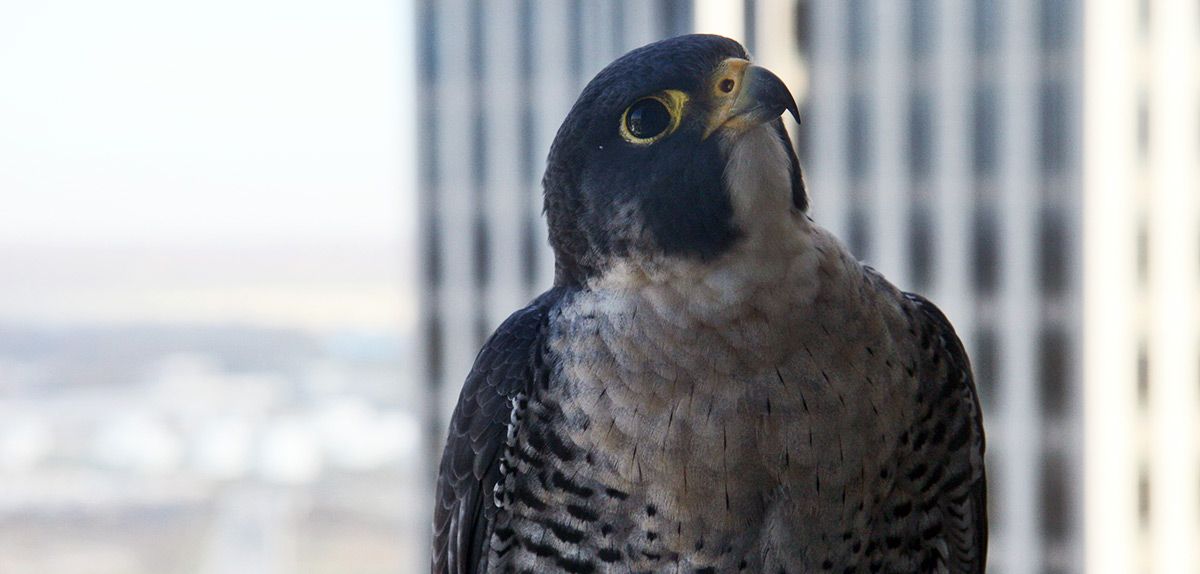
Falcon Facts
Peregrine Falcon Glossary
Expand your vocabulary with these bird words.
Banding
Putting identification bands on birds. When peregrine babies are about 20 days old, environmental scientists put numbered bands on both legs. This helps scientists track the birds and follow their progress over the years.
Chicks
Baby birds of any kind.
Clutch
A batch of eggs or chicks.
Down
The soft fuzz that covers the baby birds before they have feathers. Down, along with the warmth from their parents' bodies, keeps them comfortable. Adults have an under-layer of down and an over-layer of flight feathers.
Egg Tooth
A special hook on the end of a baby bird's bill that helps it break through the egg to hatch.
Eyas
A baby falcon in the nest.
Fledging
A young bird that has learned to fly.
Frounce
Frounce (or Avian Trichomoniasis), is a highly contagious yeast infection of the digestive tract. Frounce is caused by a protozoan called Trichomonas which is frequently present in the crops of pigeons. The typical signs of frounce are white spots in the mouth or crop. Other signs are head flicking, difficulty breathing or even regurgitation of food. Birds who are untreated usually succumb to Frounce within 7 - 10 days.
Hack
A technique used to prepare the falcon to become an independent hunter by letting it fly freely and feeding it at a hack board or a hack house.
Incubate
To keep eggs warm so that embryos develop and hatch. The adult peregrines incubate the eggs by sitting on them. They also turn the eggs with their beaks from time to time. Incubation extends for 33 days.
Migrate
To travel from one climate region to another on a regular basis. Most peregrines migrate to warmer climates in the winter and return to their breeding grounds in early March.
Pelt
The dead body of any quarry the falcon has killed.
Pip
To break through the shell of an egg. A baby falcon pips, using its egg tooth, to begin hatching.
Predator
An animal that kills and eats other animals. Peregrines are predators. They hit their prey in flight at speeds up to 250 miles per hour.
Prey
Animals killed and eaten by predators. Typical peregrine prey includes pigeons, starlings, blackbirds, ducks, flickers, and doves.
Quarry
The bird or prey that is attacked.
Raptor
A predatory bird.
Scrape
A peregrine nest. Peregrines that nest high on cliff banks use stones and pebbles to prevent their eggs from rolling away.
Talons
The sharp claws of falcons and other raptors. A peregrine uses it talons to knock its prey out of the air and carry it off.
Tiercel
The male falcon.
Winter Over
o spend the winter in a cold place instead of migrating. Many peregrine falcons leave their northern breeding grounds in the winter, flying to areas that provide open water in the southern part of North America or to South America. Some, though, stay in their northern breeding grounds during winter if there's enough open water and food.
Web 513 R-3/21
